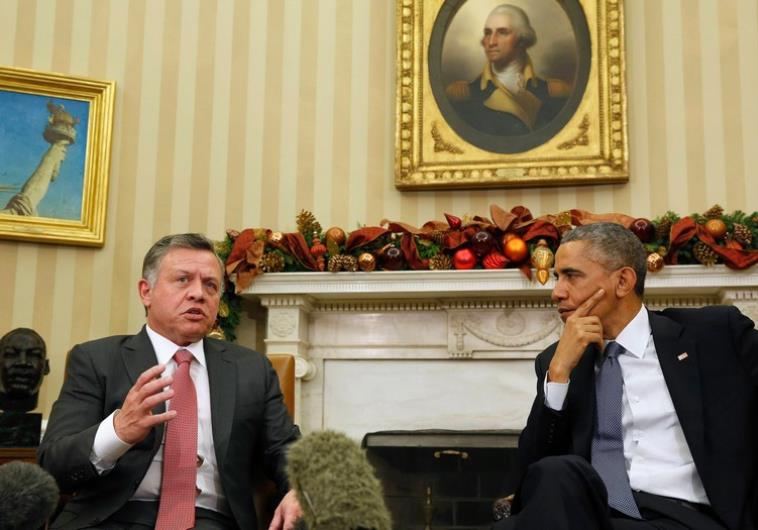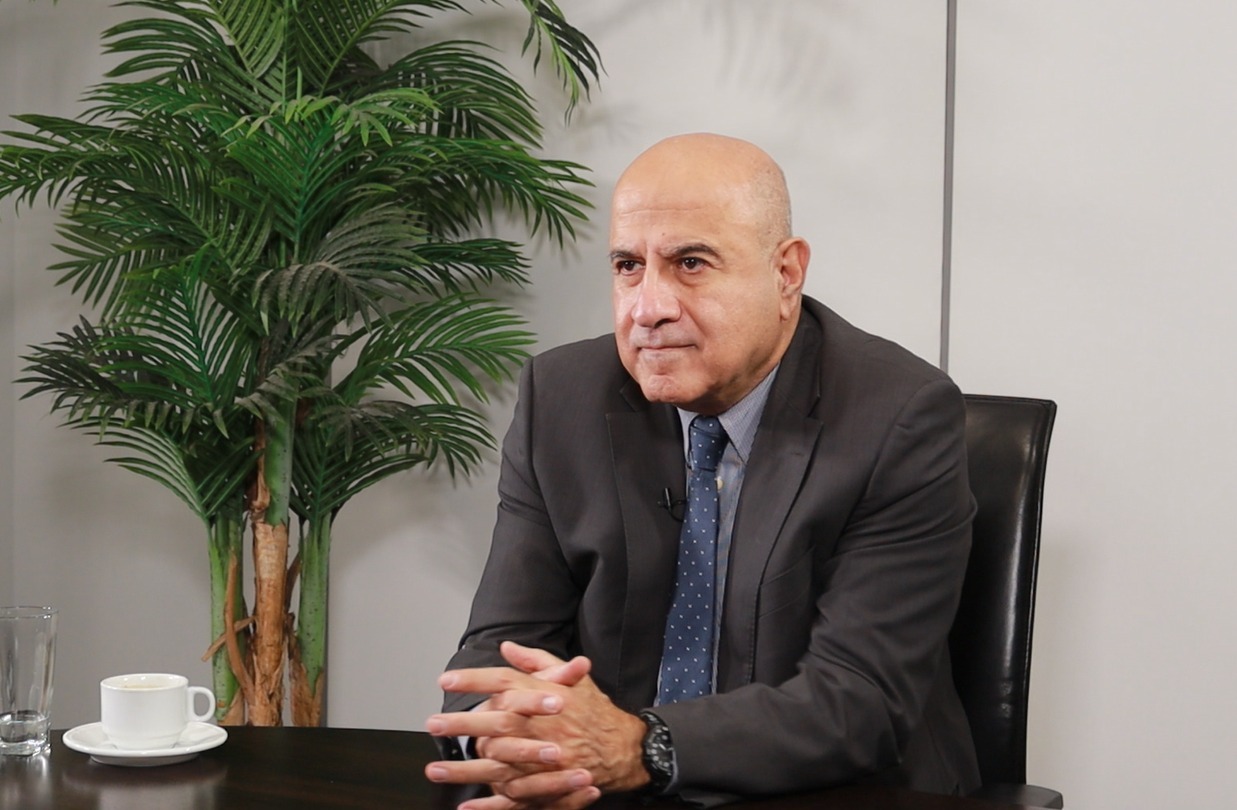Israel’s first ever arms deal with an Arab country – drones for Jordan to fight ISIS
DEBKAfile Exclusive Report August 15, 2015
In its first arms sale to an Arab country, revealed here by debkafile’s military sources, Israel has sold Jordan 12 advanced unmanned aerial vehicles of the Heron TP and Skylark types. They are urgently needed by the Jordanian Royal Air Force to beef up the counter-terrorism campaign against the Islamic State of Iraq and the Levant in which the Hashemite Kingdom is locked across its borders in Iraq and Syria. The Heron TP drone is an assault vehicle. Its speed is 370 kph at an altitude of 7,400 km and it can stay aloft for 70 hours at a height of 14 km. The Heron is needed for air strikes against Islamist targets deep inside Iraq or Syria and also as an effective weapon for halting enemy forces advancing on Jordan’s borders through the deep crevasses of the eastern Syrian Deir E-Zour region or from Iraq’s Anbar Province to the east
Skylark, which weighs 7 kg, will gather intelligence for Jordan’s special forces in both arenas. Its cameras beam down a full picture in real time of an active battle field.
debkafile’s military sources report that Jordanian commandos have thrust 200 km deep into Iraq. They have reached the important town of Ar Rutbah, which commands the No. 1 freeway connecting the Iraqi and Jordanian capitals Baghdad to Amman, and prevented ISIS from cutting it off. Israeli and Jordanian officials decline to reveal details about the financial scope of the sale, how the new Israeli drones will enter service in Jordan and whether Israel has set up an operations center in the Royal Air Force for deploying them. Operating the Herons and Skylarks requires personnel especially trained in their use. Many secret operations against ISIS are run by the joint US-Jordanian-Israeli war room at US Central Command Forward – Jordan north of Amman. Officers at this center may also be managing the UAVs’ operation.
Another aspect of Israeli-Jordanian military cooperation was revealed last week when the American Foxtrot Alpha website reported a group of five Royal Jordanian Air Force F-16s flying alongside Israeli Air Force KC-707 fuel tankers heading west towards Lajes Field, a mid-Atlantic transit point for military aircraft. The fleets were heading for Nellis Air Force base in Nevada to take part in the Red Flag air-to-air training exercise from Aug. 17 to 28. The Israeli Air Force’s appearance in the exercise comes when relations between Washington and Jerusalem are apparently at a low point. Although Israel and Jordan are security partners, Israeli tanker aircraft escorting Jordanian F-16s across the world alongside IAF F-15s, is a special event that indicates a new level of military cooperation operation between the two nations. This disclosure shows that the partnership between the Israeli and Jordanian air forces is deep and extensive enough for the two air arms to work together in a long-range training exercise.
This development comes shortly after the news, revealed on July 23 by Pentagon sources, that Israel had donated AH-1 Cobra attack helicopters to Jordan to withstand ISIS threats.,
This week also saw the first anniversary of the US-led coalition campaign launched against ISIS in Iraq and Syria just a year ago. The US aerial operation against the Islamist terrorists has been too diluted to be much use in curbing their advance, especially when American bombers often return to base with two-thirds of their ordnance unused. The only two armies actually fighting ISIS on the ground – where it really counts – are the Jordanian armed forces and the northern Iraqi Kurdish republic’s Peshmerga, joined by the Syrian Kurdish YPG militia.
Amman has kept its campaign against ISIS in neighboring countries under very tight wraps, including its aerial dimension. debkafile’s disclosure now of the sale of Israeli drones to Jordan opens a small window on the scale of this effort.
Rival Peace Plans Won’t Save Syria
Jonathan Spyer/The Jerusalem Post/August 15, 2015
Originally published under the title, “Syria’s New Diplomacy.”
The Syria peace plan put forth by Iranian Foreign Minister Mohammed Javad Zarif mandates a ceasefire in place and formation of a transitional government. As the civil war over the ruins of Syria grinds on into its fifth year, the fighting seems nowhere near an end. Indeed, there is no longer a single war taking place in the country. Rather, as Syria physically divides into separate entities, so the conflict, too, further subdivides, spawning new conflicts. There are today no less than five different conflicts taking place within the borders of the country: the contests between the Sunni Arab rebels and the Assad regime/Hezbollah/Iran (the original war which brought about the others); the Kurdish YPG’s fight against Islamic State; intermittent clashes between the Sunni Arab rebels and Islamic State; Islamic State’s own war against the Assad regime; and now also the renewed war between Turkey and the PKK, which is being played out partly on Syrian soil.
The presence of these five interlocking conflicts notwithstanding, efforts to make diplomatic progress toward some form of settlement, or at least freezing of the conflict, are under way.
There are today no less than five different conflicts taking place within the borders of Syria. Recent days have seen details emerge of two rival “peace plans” for Syria. One of these is sponsored by the Iranians, the main supporters of the Assad regime, the other is the handiwork of Saudi Arabia, which wants the removal of the regime and supports elements among the Sunni Arab rebellion against it.
Neither plan stands much chance of implementation. But the content of the plans and their very existence demonstrate that the Syrian situation is not static. They also indicate the extent to which the aims of the backers of the combatant sides are currently irreconcilable. The Iranian proposal, according to a report in the Araby al-Jadeed newspaper on Monday, constitutes a plan for the freezing of the conflict in place and the subsequent de facto partition of Syria. According to the newspaper, the plan is being promoted by Iranian Foreign Minister Mohammed Javad Zarif during his current round of meetings with regional officials. The plan proposes that each side would hold on to its current areas of control, except for the city of Aleppo, which would come under international supervision.
The regime and the rebels would then cooperate with the international coalition in the fight against Islamic State. Negotiations between the sides would continue, with the intention of forming a “national government, writing a new constitution and holding nationally monitored elections.” The Assad regime now controls just over 20 percent of Syrian territory. The regime, according to the plan, would keep control of “Damascus, the Syrian-Lebanese border, Qalamoun, western Ghouta, Zabadani, Homs and the area to its west all the way to the Syrian coast, and Tartus Port.”
This is in essence the area controlled by the regime today. Yet the apparent willingness of the regime’s backers to “settle” for this area rather than to continue to hold out for the eventual reconquest of the entire country (Syrian President Bashar Assad’s aim throughout the war) reflects the declining military fortunes of the Assad regime.
The regime now controls only just over 20 percent of the area of Syria. In the north, it is reeling from the hammer blows inflicted by the Jaysh al-Fatah (Army of Conquest) rebel coalition. This coalition includes some of the strongest Islamist rebel forces in Syria. Jabhat al-Nusra, the Syrian franchise of al-Qaida, is a component part of it, as is Ahrar al-Sham, the most powerful of the “homegrown” Salafi groups on the Syrian battlefield.
It is supported by Qatar, Turkey and Saudi Arabia. The Saudi provision of US Tow antitank missiles, transported across the border from Turkey, is playing a telling role in the fighting, reducing the regime’s advantage in heavy weaponry. As of now, Jaysh al-Fatah is attempting to destroy the final regime positions on the Al-Ghab plain. Loss of these positions raises the frightening prospect for the regime of the front line moving into the populated parts of Latakia Province, the heartland of its support.
Already, the Alawi villages in Latakia are within range of the rebels’ missiles. Entry into Latakia would effectively end Assad’s hopes of preserving intact a safe area of the country for the members of his sect and other supporters of the regime. Should the pivotal Joureen base in Ghab fall to the rebels, the regime would then face the possibility of its supply lines to the city of Hama further south being cut off.
The regime is therefore fighting desperately to hold its positions on the flat, barren Sahel al-Ghab. Hezbollah fighters are there, fighting alongside Shi’ite “volunteers” from as far afield as Afghanistan.
The motley collection of regime defenders in Ghab reflects the key difficulty that Assad has faced since the commencement of the war. The narrow base of support of his regime has meant that he has faced severe challenges in mustering sufficient manpower to defend the areas under his control. A counterproposal put forward by Saudi Foreign Minister Adel al-Jubeir demands Assad’s immediate departure from power. The solution until now has been to reduce these areas. At a certain point, of course, the shrinking size of the regime’s domain raises the question of its continued viability. This point may now be approaching. The Saudis, however, have made clear that the current Iranian proposals are unacceptable. The sticking point, as Saudi Foreign Minister Adel al-Jubeir outlined in a statement this week, is that Riyadh wants Assad’s immediate departure from power rather than a continued role for him in any transitional phase.
“There is no place for Assad in the future of Syria,” Jubeir said, speaking in Moscow after meeting Russian Foreign Minister Sergei Lavrov. “Assad is part of the problem, not part of the solution.” Saudi counterproposals, as reported in the Al-Hayat newspaper this week, envisage the immediate cessation of Iranian and other outside support for the regime and the departure of Hezbollah fighters from Syria, followed by new, UN-supervised presidential and parliamentary elections, after the stepping down of Assad.
The differences are familiar and not yet close to being bridged. The diplomacy, as ever, mirrors the military situation on the ground. Assad’s fortunes have declined. This is leading to reduced ambitions and consequently increased flexibility on the part of his backers. But there are no signs yet that his allies are about to desert him, nor that their reduced demands are anywhere close to being acceptable to the forces behind the rebels. So the fight goes on. More importantly, it should be remembered that the war between Assad and the Sunni rebels is now only one of the several conflict systems that have torn Syria apart. So even if Assad’s declining fortunes were to lead to his departing the scene, the war for Syria’s succession, and the suffering of its inhabitants, would almost certainly not be at an end.
**Jonathan Spyer, a fellow at the Middle East Forum, is director of the Rubin Center for Research in International Affairs and author of The Transforming Fire: The Rise of the Israel-Islamist Conflict (Continuum, 2011).






















